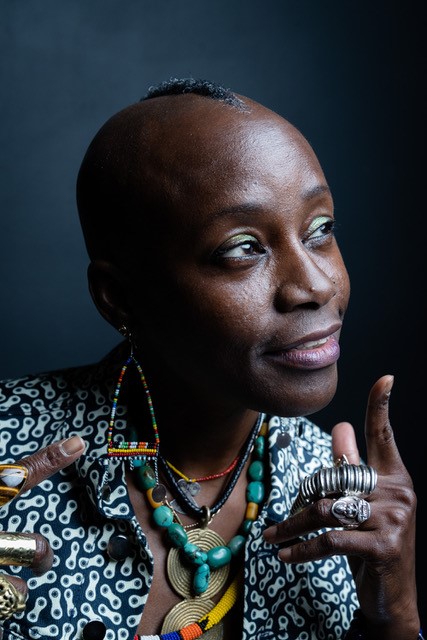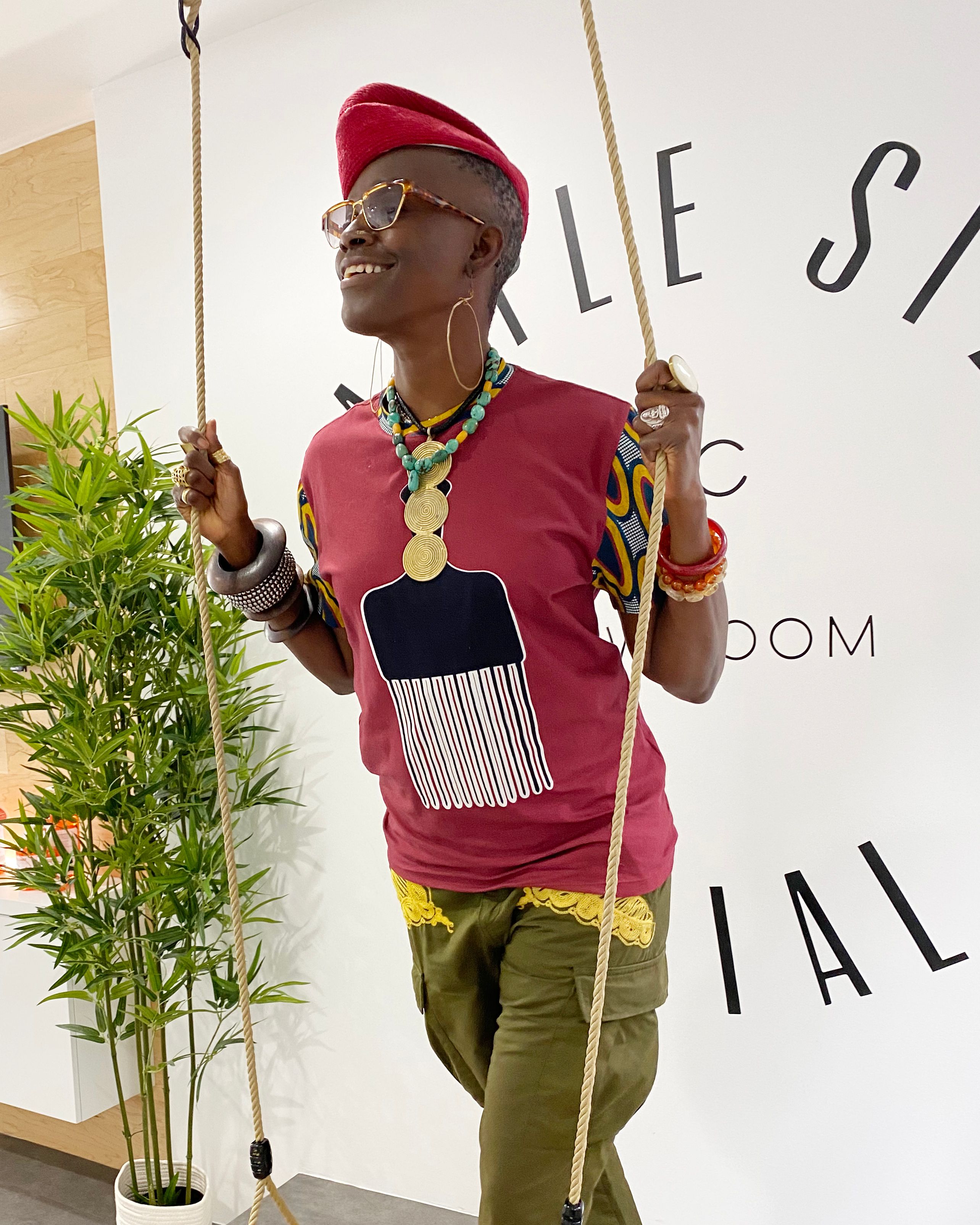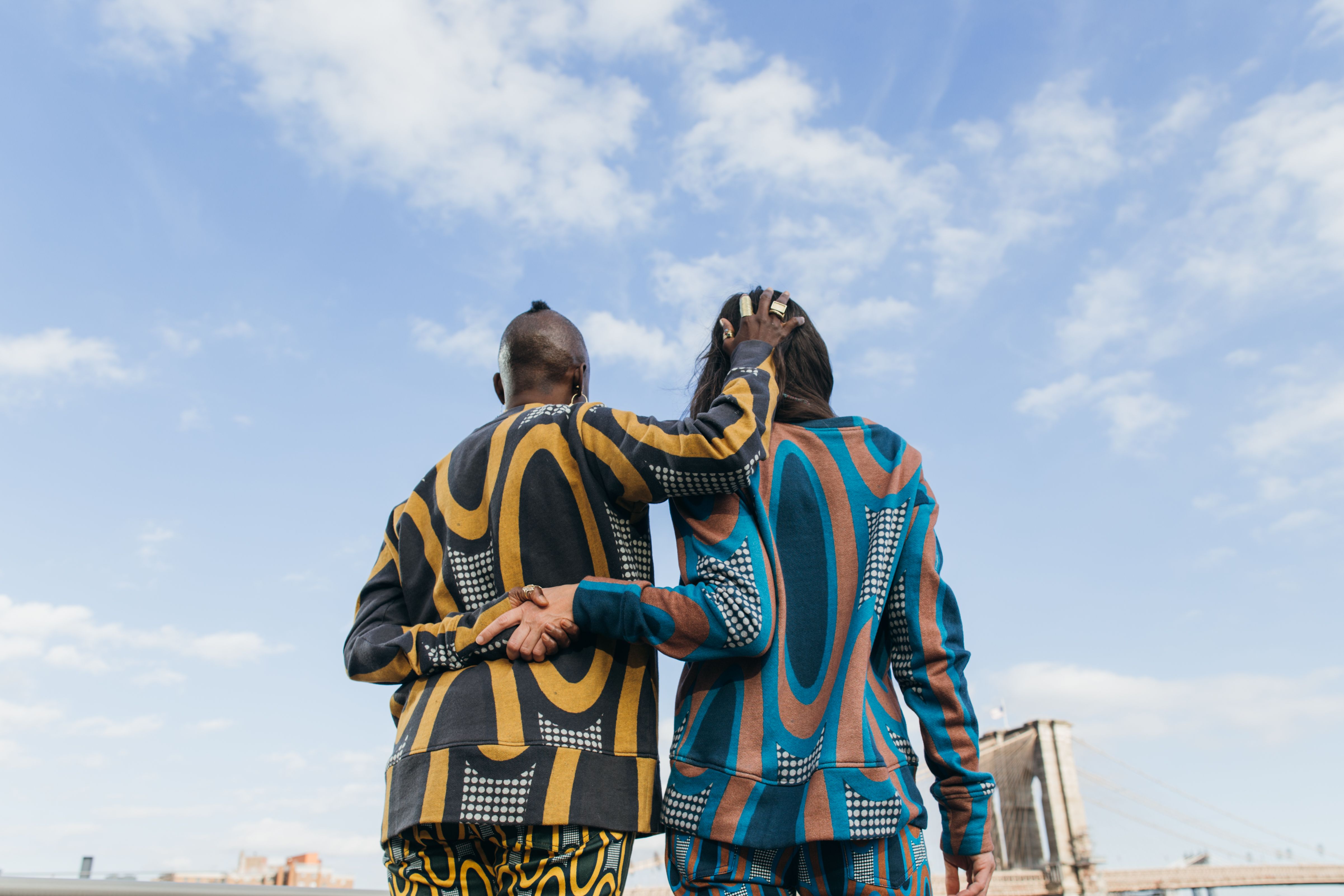“Lola Faturoti Loves is for everyone, which is how I always want to be. The collection is made to make people feel joy and help them share their inner joy with everyone they encounter.”
Is Lola Faturoti on your radar? If yes, then good for you! No? Well, you don’t know what you’re missing, my fashion compadre! Her designs, fly drone high in spirit with the plasma of her ancestors in each intricate adjudication. But Faturoti’s own personal convention and demeanor is rich, gentle, and low – quiet and humble, like the soil of her precious Nigerian descent; the perfect yin to her own yang. Or, were I to use the analogy if fashion London and fashion Nigeria had a baby, it absolutely birthed Lola Faturoti Loves!
Born in London, raised in Nigeria, fashion-schooled in London and living in Milan just may have been Lola’s perfect antidote to her brand’s ever-evolving success. Arriving in New York City in the early 1990s when fashion was at its greatest peak, the designer experienced a whirlwind of opportunities, chance encounters, partnerships, and press praise. This was the ultimate lucid dream. Faturoti was very clear on her direction and design stance, and she never waivered.
Former New York Times fashion and style editor – the late Amy Spindler, an industry icon in her own right – became a mentor to Faturoti and offered the olive branch of friendship to help her in any way she could. Spindler asked Lola whom she wanted to meet. The declaration of André Leon Talley had Faturoti in the Vogue offices the next day. Spindler editor made good on her promise. That encounter and relationship placed Lola Faturoti on the list as one of the best designers “at the end of the millennium.” A design from The Guerilla Action ensemble she created that year is now archived at the Metropolitan Museum of Art’s Costume Institute.
Unbeknownst to most, you have sustained success in the fashion business for almost 30 years! What was your driving force behind becoming a designer?
I was born in London, and at the age of three, I was sent to Nigeria to live with my paternal grandmother. She was a traditional, native couturier. I watched her as a youth, combining colors and multiple fabrics, and it was something that stayed with me and emerged into my roots and upbringing. Of course, my childhood impulse was to play and entertain friends, but my grandmother included me in her design processes and that is where my training began. My second inspiration was my mother. She’s my fashion icon. She’s an Aquarian, and very eccentric with her attire and how she combines her wardrobe. The foundation of my stimulus gives credit to the dressmaker in my grandmother and the maverick style of my mother.
You use a lot of bold colors, patterns, shapes and characteristics that interpret your love of your African pedigree and stand out from most designers. Was this a meditated viewpoint to convey to the fashion industry?
I would say it was unintentional. Being rooted in it, it is me. It is who I am and what I represent. Everything that I have designed, including my contemporary pieces from way back when and my couture construction in the 90s inspired by Margiela…I have always used bold colors. The bolder the better! Color is exceptionally important to me in my life; it brings me the utmost of joy. My modern take on African inspiration hails from the essence of my upbringing bounded by London and Nigeria. I wanted to bring my culture to world in a modern way that everyone could wear.







